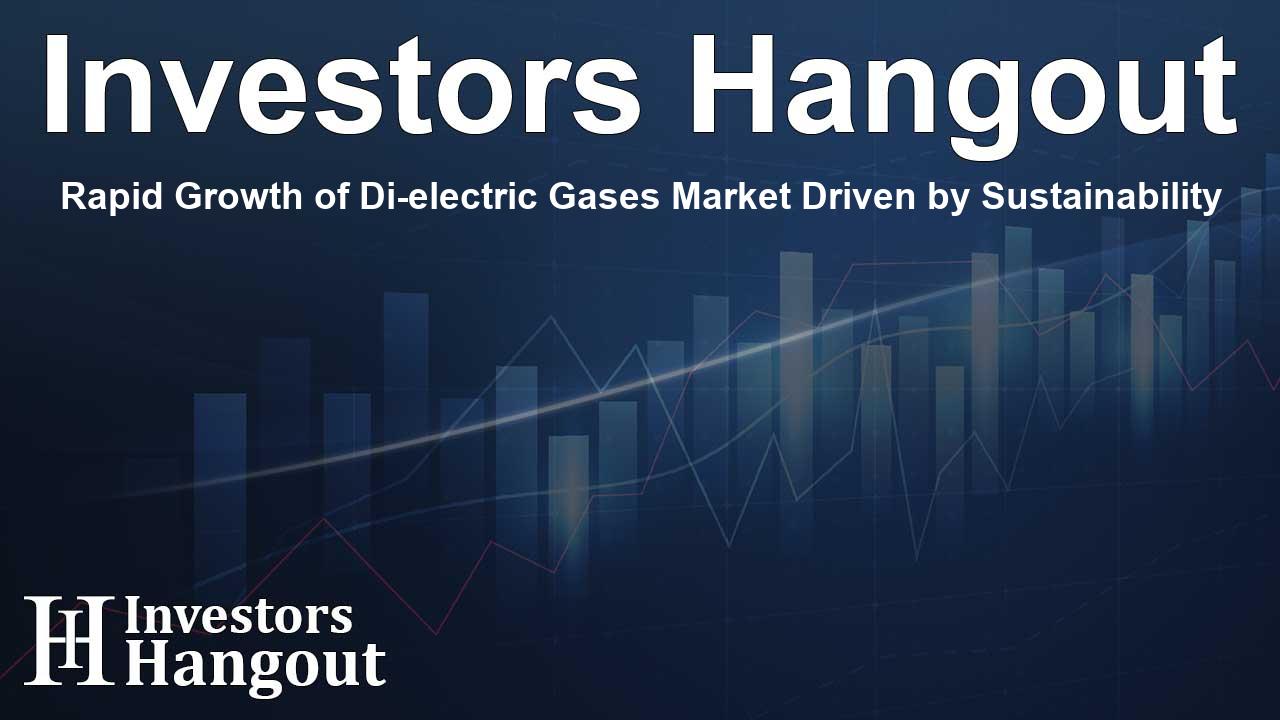Rapid Growth of Di-electric Gases Market Driven by Sustainability

Di-electric Gases Market Growth Projections
The di-electric gases market is anticipated to experience significant growth, expanding from USD 144.9 billion in 2024 to around USD 290.5 billion by 2034. This impressive evolution represents a healthy compound annual growth rate (CAGR) of approximately 7.2%. The push towards renewable energies and innovative energy practices is being fueled by various industries adopting effective solutions for electrical insulation.
Driving Factors Behind Market Demand
Multiple factors are propelling the robust demand for di-electric gases. One primary driver is the increasing necessity for safe electrical insulation in high-voltage applications. These gases are commonly utilized in transformers and switchgear to ensure operational safety and efficiency. With the growing focus on renewable energy sources and the modernization of aging electrical infrastructure, this market is poised for robust growth over the next decade.
The Shift to Eco-Friendly Alternatives
Another pivotal reason for the expanding market is the shift towards environmentally sustainable gases. Traditional insulating gases, such as sulfur hexafluoride (SF6), are gradually being phased out due to their detrimental environmental impacts. This transition is paving the way for newer alternatives that offer both superior performance and lower global warming potential, attracting the attention of companies and governments aiming to minimize their carbon footprint.
Industrialization and Urbanization Effects
The ongoing industrialization and urbanization in emerging economies also contribute to the high demand for di-electric gases. High-voltage equipment, essential for smart grid technologies, heavily relies on these gases. The increasing investments in electrical infrastructure within regions like Asia-Pacific and Latin America underpin substantial market growth, and the trend shows no signs of slowing down.
Technological Advancements and Their Impact
With technological advancement in smart grids and renewable energies, the demand for reliable di-electric gases continues to rise. Innovations in gas chemistry promise to broaden the scope of their applications, while enhanced gas-handling technologies lead to more efficiencies in use. As industries lean towards incorporating advanced technologies for power transmission and distribution, we can expect these gases to play a vital role in their future.
Future Market Insights
Research indicates that the di-electric gases market is influenced significantly by eco-friendly regulatory measures. Governments worldwide are tightening regulations on greenhouse gas emissions, which directly impacts industries shifting to these cleaner alternatives. Renewable energy systems such as wind, solar, and hydropower are also on the rise, necessitating high-performance insulation in power infrastructure. Companies are looking towards cleaner di-electric gases as a direct response to these regulations and as part of their sustainability initiatives.
As per the analysis by Future Market Insights, the following elements are identified as critical growth drivers:
- Environmental Regulations: Stricter governmental policies spur the transition towards eco-friendly di-electric gases across the globe.
- Smart Grid Innovations: The rising demand for smart grid technologies highlights the need for efficient, reliable insulation—a demand that these gases fulfill perfectly.
- Infrastructure Modernization: Upgrading electrical infrastructure to support expanding urban areas fuels the increasing requirement for advanced insulation solutions.
Market Highlights
This growth trajectory evidences the movement of di-electric gases into the future, with substantial emphasis on sustainable practices. By 2034, the expectation is for these gases to establish a solid presence in various sectors, propelled by their role in advanced insulation solutions and eco-friendly alternatives to traditional gases.
Key Markets and Competitive Landscape
The leading vendors in the di-electric gases market include notable names like 3M Company, ABB Ltd, and General Electric. These companies are heavily invested in sustainable practices and innovative insulation technologies. With a competitive landscape that encourages progress and innovation, we can expect transformative advancements that will reshape the industry.
Frequently Asked Questions
What is the projected growth for the di-electric gases market?
The market is expected to grow from USD 144.9 billion in 2024 to USD 290.5 billion by 2034, at a CAGR of 7.2%.
What drives the demand for di-electric gases?
Key drivers include the need for safe electrical insulation, the phase-out of SF6, and increasing regulation towards greener alternatives.
Which regions are expected to lead the market?
Asia-Pacific is projected to be a leading region due to rapid industrialization and urbanization.
What industries utilize di-electric gases?
Mainly power utilities, oil & gas, and manufacturing industries employing switchgear and transformers.
Who are the major players in the di-electric gases market?
Major companies include 3M Company, ABB Ltd, and General Electric, renowned for their advanced insulation solutions.
About Investors Hangout
Investors Hangout is a leading online stock forum for financial discussion and learning, offering a wide range of free tools and resources. It draws in traders of all levels, who exchange market knowledge, investigate trading tactics, and keep an eye on industry developments in real time. Featuring financial articles, stock message boards, quotes, charts, company profiles, and live news updates. Through cooperative learning and a wealth of informational resources, it helps users from novices creating their first portfolios to experts honing their techniques. Join Investors Hangout today: https://investorshangout.com/
Disclaimer: The content of this article is solely for general informational purposes only; it does not represent legal, financial, or investment advice. Investors Hangout does not offer financial advice; the author is not a licensed financial advisor. Consult a qualified advisor before making any financial or investment decisions based on this article. The author's interpretation of publicly available data shapes the opinions presented here; as a result, they should not be taken as advice to purchase, sell, or hold any securities mentioned or any other investments. The author does not guarantee the accuracy, completeness, or timeliness of any material, providing it "as is." Information and market conditions may change; past performance is not indicative of future outcomes. If any of the material offered here is inaccurate, please contact us for corrections.